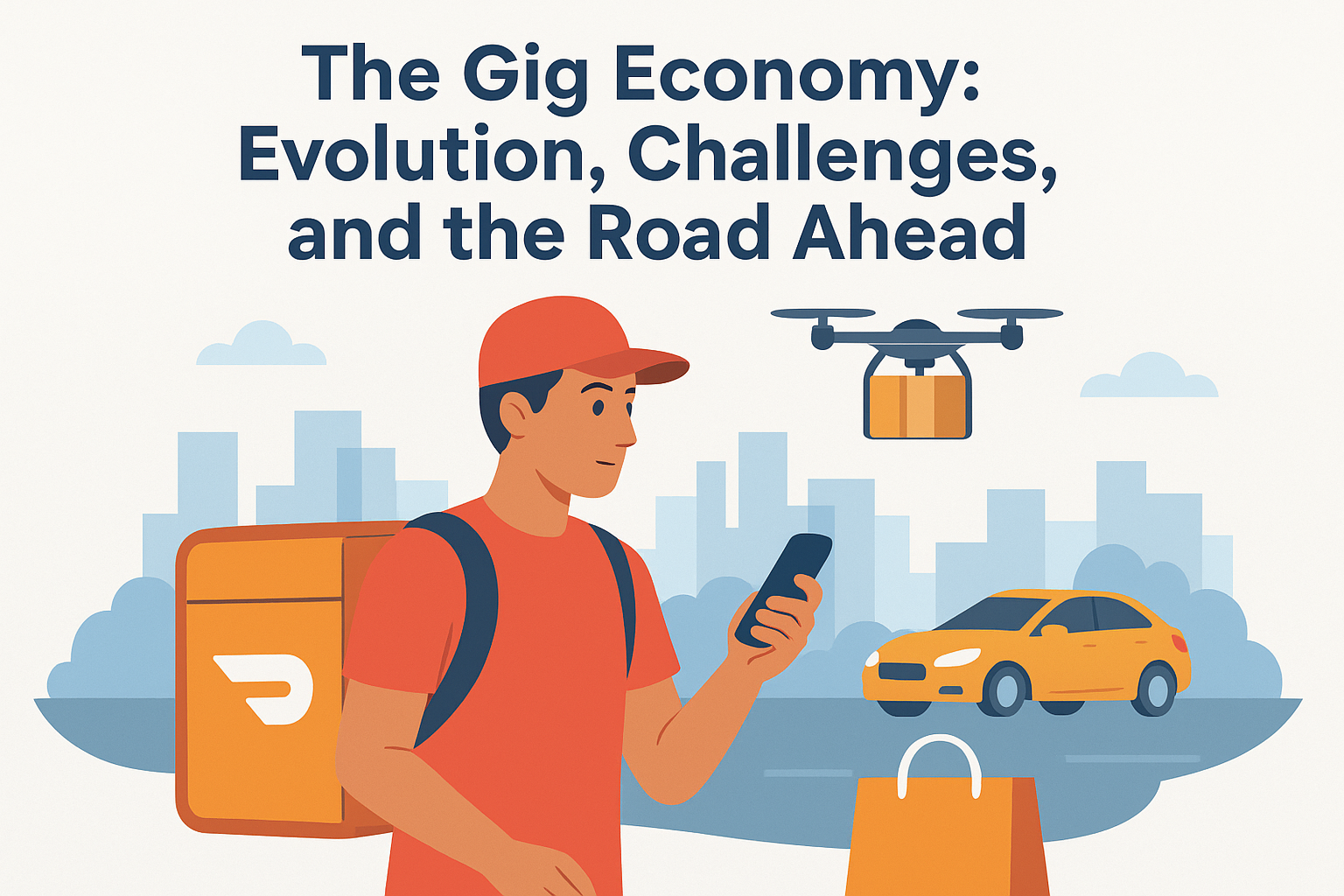The Gig Economy: Evolution, Challenges, and the Road Ahead
The gig economy continues to evolve at a breathtaking pace, with companies like DoorDash reaching astronomical valuations while simultaneously expanding their global footprint. Recently valued at $100 billion, DoorDash has transformed from a simple food delivery service to a multifaceted global corporation, marking its first annual profit in 2024 after years of aggressive expansion. This milestone represents the maturation of the gig economy, where early-stage growth and market capture often take precedence over immediate profitability.
DoorDash’s strategy illustrates the evolving business model of gig economy platforms, which increasingly diversify beyond their core services. The company’s acquisition of Deliveroo for $4 billion gives them significant presence in more than 40 countries, while their purchase of Seven Rooms, a hospitality software company, demonstrates their ambition to control multiple aspects of the restaurant industry ecosystem. Perhaps most notably, DoorDash’s advertising technology business has crossed the $1 billion threshold in annualized revenue, indicating that data and advertising may ultimately prove more profitable than the delivery service itself.
While gig economy companies expand, concerning trends continue to emerge regarding how workers navigate an increasingly competitive landscape. Recent videos have shown children delivering packages for Amazon Flex and DoorDash drivers, raising serious safety concerns. These children, some appearing as young as 10 years old, can be seen approaching strangers’ homes unaccompanied – exposing them to potential dangers from aggressive dogs to unsafe encounters. This troubling practice highlights the pressure many gig workers feel to maximize efficiency, sometimes at the expense of safety and proper protocol.
The relationship between gig platforms and their merchant partners also deserves scrutiny. A shocking story emerged about a bakery in Cupertino that was overcharged by DoorDash for eight years, with the company collecting a 30% commission instead of the contracted 13%. This discrepancy, amounting to over $100,000, went undetected until a family member reviewed the financial records. While DoorDash eventually refunded the money after media involvement, the incident raises questions about how many other small businesses might be unknowingly overcharged, especially those without the resources for regular financial audits.
Technological innovation continues to reshape the gig landscape, with drone delivery representing the next frontier. DoorDash is now recruiting workers to transport food from restaurants to drone loading stations, offering $18 per hour for this new role. While this technology promises faster deliveries and reduced traffic congestion, practical challenges remain regarding weather limitations, operational logistics, and the somewhat counterintuitive process of having human couriers deliver food to drones rather than directly to customers. Nevertheless, consumer curiosity will likely drive initial adoption as people embrace the novelty of drone delivery.
The gig economy continues to present a complex mix of opportunity, innovation, exploitation, and adaptation. As companies like DoorDash expand globally and diversify their revenue streams, both workers and merchants must remain vigilant about their relationships with these platforms. The future of work increasingly depends on finding the right balance between technological efficiency and human wellbeing, ensuring that convenience for consumers doesn’t come at the expense of fair treatment for those who make the gig economy possible.

